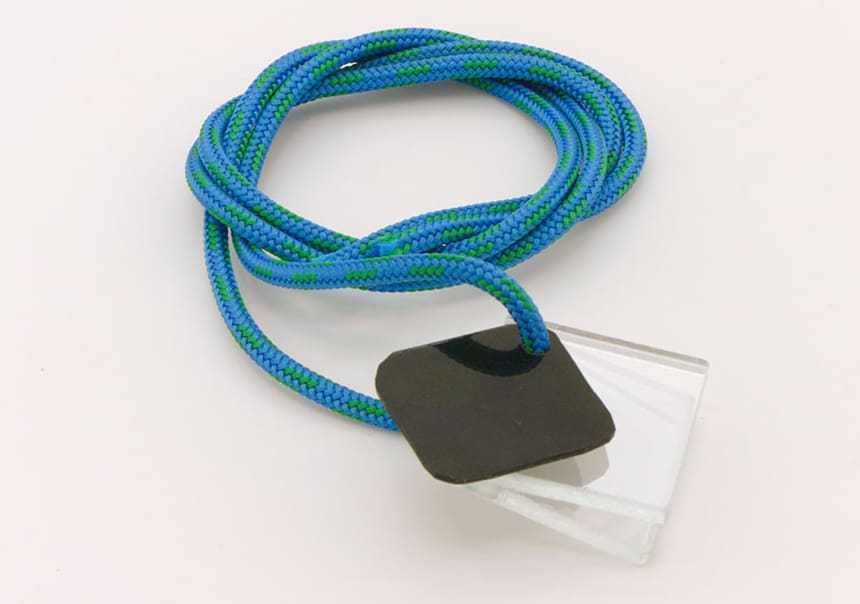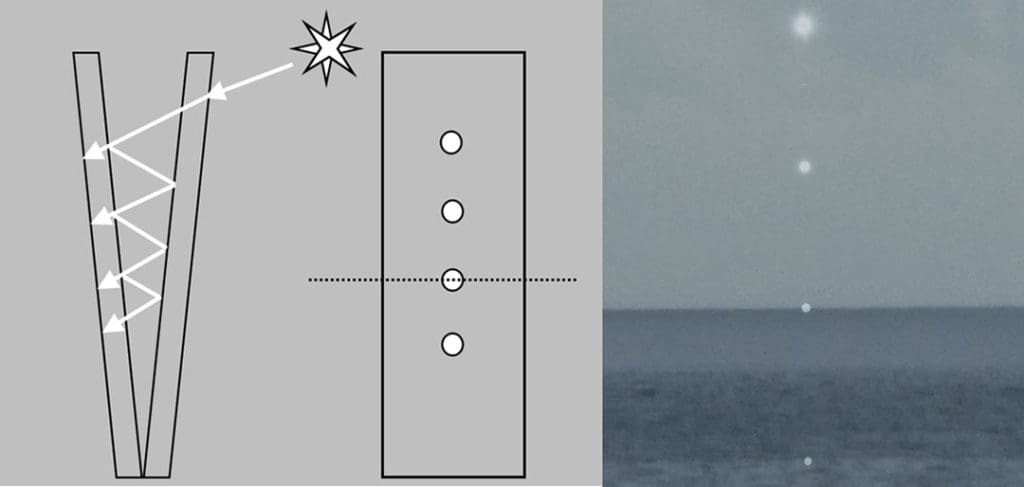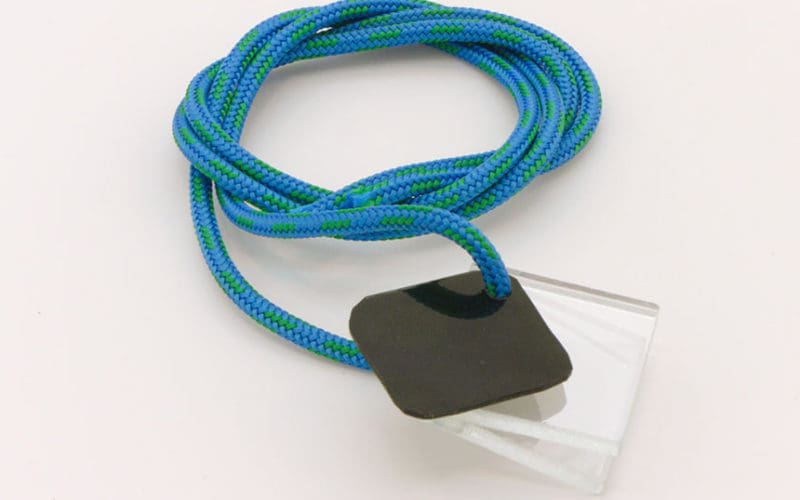
There have been many attempts over the decades to simplify celestial navigation. Now a new celestial nav simplification effort is about to launch called StarPoint. Still in the Kickstarter stage, StarPoint makes use of a small fixed optical device based on the Bris sextant originally developed by Swedish sailor Sven Yrvind. The StarPoint offering is more than merely a reselling of the Bris device, however. It’s a complete package that developer Brian Villmoare, assisted by fellow developer James Weisheit, has crafted to make celestial nav more accessible. Using the StarPoint system, users can get a lat/long fix with two sights of the sun.
The first part of Villmoare’s StarPoint package is the sighting device. Based on the Bris sextant, the StarPoint device is two pieces of three-millimeter-thick glass that have been epoxied together at a fixed angle. The glass is same type of material used for teleprompters and so is semi-reflective. It acts as a beam splitter — some of the sunlight entering the unit passes through, but some is captured in a series of internal reflections. These reflections produce an array of six bright dots. Each dot represents an angle of the sun above the horizon. The user holds the unit up to his or her eye (the StarPoint unit comes with two shade-5 welding filters for eye protection) and views the array of six dots, lining up one of them so that it’s split by the horizon. The StarPoint sextant can be worn around your neck and be readily available for taking sights.

The second part of the StarPoint system is a watch that not only reads time, but also is set up to read out the GHA of the sun. When a user takes a sight with the sextant, he or she also notes the GHA angle from the watch. The watch has a built-in capability to compensate for the equation of time. The package also includes a solar-powered calculator and a user’s manual all packaged in a waterproof Pelican case. Villmoare has also produced an Android/iOS smartphone app.
So how do two sights with the StarPoint sextant yield a lat/long fix? To explain that, let’s look at the traditional noon sight. As the sun is crossing our meridian of longitude at local apparent noon, LAN, it seems to “hang” in the sky for a few minutes (a quick group of sights at this time will yield essentially the same sextant angle). This makes it difficult to determine observationally the exact second when it crosses our meridian. To get around this observational quirk, we can take a sight 10 minutes or so before the calculated time of LAN and note the angle. We also take a few sights at the time of LAN. Then we set our sextant to the angle we observed when we took the sight a few minutes before noon. When the sun sinks to that angle, we note the time. By averaging the time of the two sights before and after noon, we can mathematically obtain the time when the sun was crossing our meridian. We can then go into the Nautical Almanac and find the sun’s Greenwich Hour Angle and convert that to our longitude. From the sights we took at LAN we can get latitude. The result is a lat/long fix.
The StarPoint approach uses essentially the same procedure. As the sun is rising in the morning, a user lines up one of the dots with the horizon and notes which dot was used and also notes and records the GHA of the sun from the StarPoint watch. Then over the course of the afternoon the user takes sights until the sun sinks to the level of the dot used in the morning. When it does, the user notes the angle from the watch. Then the data (including the all-important height of eye) is entered into either the app or is worked with the calculator and forms from the manual. The result will be the user’s lat/long. There are some caveats to remember, of course. The first is that, just like a lat/long obtained from a noon site method, the fix is a historical one, not immediate. It tells you were the boat was at noon. And if the boat is moving fast, a measure of inaccuracy enters the fix calculation.
What prompted Villmoare, a college professor and paleoanthropologist, to develop this system? “I’m a scientist, always poking at things,” Villmoare said, “That’s my job.” As an admirer of analog devices like slides rules and bubble sextants and with a grandfather who learned navigation from US Navy navigation authority Captain P.V.H. Weems, Villmoare thought about the issue of celestial navigation and started working on the StarPoint system. “There’s got to be a way of predicting the trajectory of the sun, I thought. People hate math, but for me the interesting part is the math.”
The StarPoint system is currently a startup project in search of funding. If you’d like to see this product become a reality, go to the Kickstarter page at www.kickstarter.com/projects/equinoxnavigation/StarPoint.

